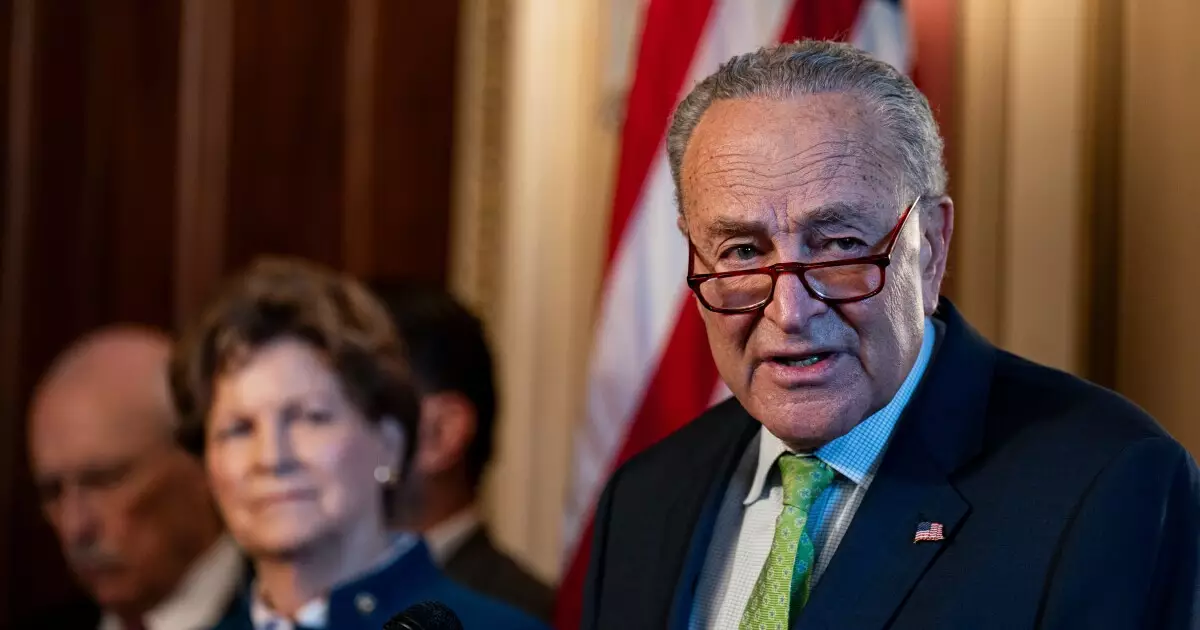The recent unfreezing of federal funding by the White House has become a source of intricate political tension and legal challenge, highlighting the fracture lines between state and federal authority. Initially set in motion by the Office of Management and Budget (OMB) on January 29, the controversial directive aimed at pausing federal grants and loans sparked a ripple effect of confusion across the political landscape. Despite its rapid rescission, the complexities of this situation recognize that battles may be far from over.
The funding freeze, initially conceived as part of President Trump’s broader strategy to modify or obstruct existing legislation surrounding federal financial assistance—most notably the Inflation Reduction Act—quickly drew widespread condemnation. Critics viewed this move as a blatant overture to undermine congressional authority. From the onset, the directive set the stage for a multi-faceted legal struggle, as 22 states led by Democratic governors moved forward with a lawsuit to challenge the administration’s overreach. Their argument underscored concerns over authority and governance, setting a legal precedent that would be carefully contested in the courts.
On the same Wednesday that the White House retracted the funding freeze, a federal judge in Rhode Island ruled in favor of the states involved in the lawsuit, allowing them to advance their case for an injunction. This pivotal moment reflected increasing judicial scrutiny of executive actions that might encroach on state-managed policies. Legal experts note that judges have a duty to assess whether actions taken by the executive branch align with congressional intent. The fact that the judge allowed the states’ injunction to proceed indicates a discernible concern regarding the administration’s intentions. Simultaneously, a separate coalition of nonprofits secured a stay on the previous order, further complicating the landscape and showcasing diverging interests across various legal fronts.
Following the rescission of the funding freeze, the White House issued various clarifications attempting to delineate the parameters of its executive orders. However, statements made by administration officials resulted in increasing skepticism among stakeholders. A tweet from White House Press Secretary Karoline Leavitt suggested ongoing risks despite the administrative retreat. This raised eyebrows among those observing the dynamic interactions within political factions. Albany’s own Senator Chuck Schumer, reflecting the growing Democratic concerns, asserted his belief that the administration would continue targeting federal assistance programs, implying that this scenario might not be an isolated incident.
With the Biden administration signaling a commitment to reevaluating existing federal allocations, the petrified tension between executive authority and congressional intent remains salient. The hastiness of the rescission appears less a resolution and more a temporary pause in a protracted struggle over federal funding, particularly as more executive orders loom. Legislative bodies and stakeholders must remain vigilant as the political climate evolves, recognizing that any change in federal funding policy can have far-reaching impacts not only domestically but also in broader policy debates ranging from immigration to environmental controls.
While the temporary suspension of the federal funding freeze alleviated some immediate concerns, the implications of the incident reverberate both legally and politically. The interactions between the judiciary and the executive highlight the delicate balance of power present in U.S. governance, where even marginal shifts can ignite complicated legal battles and political commentary. As critical stakeholders continue to navigate this convoluted scenario, it is evident that adherence to legislative frameworks and appropriate checks on executive actions are paramount for preserving the federal structure as envisioned by the framers of the Constitution. This episode may serve as a critical case study in understanding the potency of a collaborative yet sometimes contentious federal-state relationship in determining the landscape of American governance.

